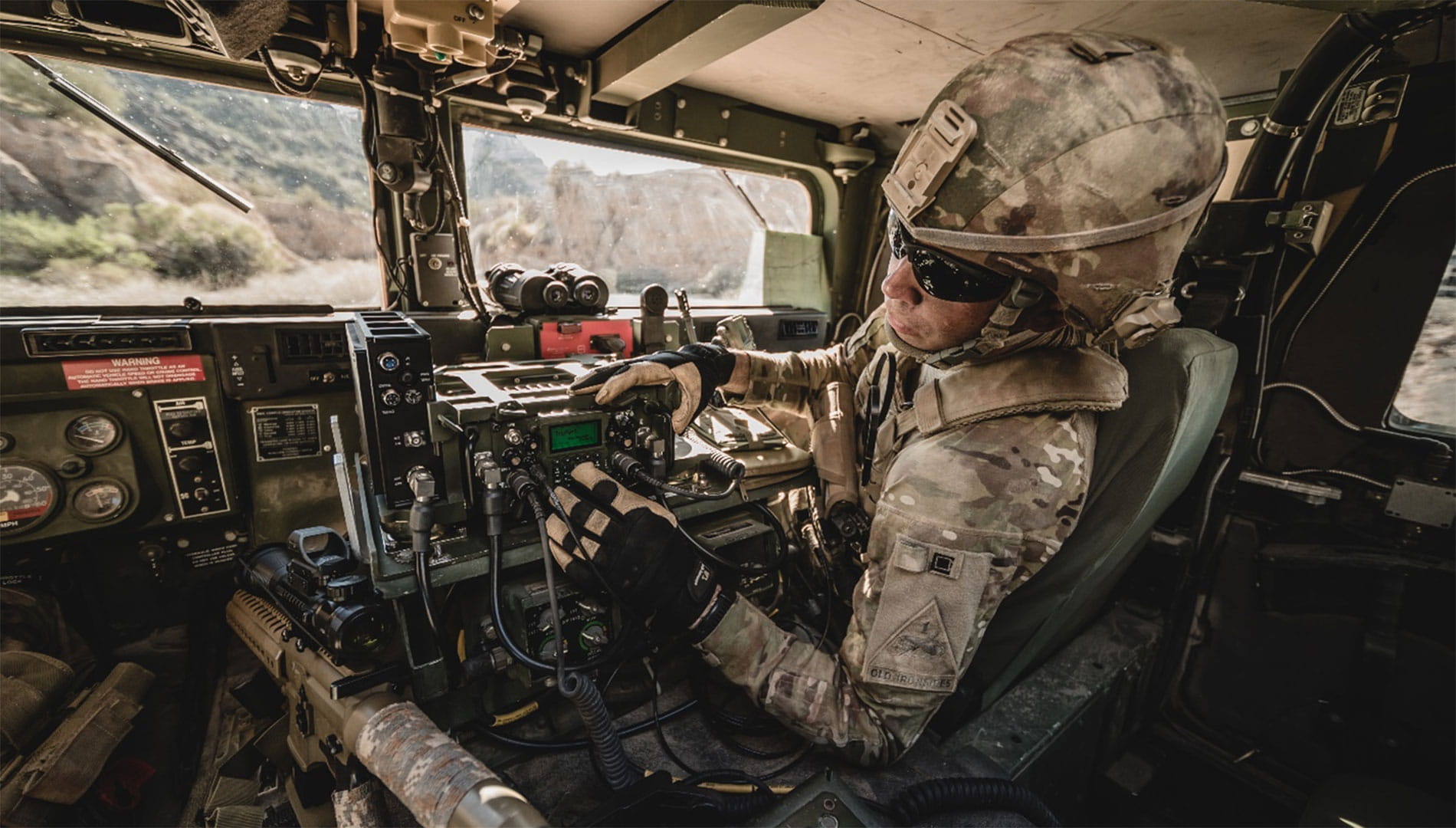How user feedback helps us build better military tech
‘Soldier touchpoints’ allow soldiers to improve the systems they use
How do you create the most effective military technologies?
Ask the people who use them.
“It’s just unvarnished feedback. It’s truth-telling down to its very core,” said Tommy Boccardi, Close Combat Systems program manager at Raytheon Missiles & Defense, a business of Raytheon Technologies. “When you can have that conversation — when they’re touching it, feeling it, using it, employing it, training on it — that’s how the innovative spark happens.”
The businesses of Raytheon Technologies are using what the U.S. Army calls “soldier touchpoints” to get user feedback early in the prototype research and development process. Soldier touchpoints help validate that new technologies will do the job.
The meaning of user-friendly
Combat requires split-second decisions. The quality of those decisions depends on the quality of the information available.
Enter technologies such as the F-35 Gen III Helmet Mounted Display System built by Collins Aerospace, a business of Raytheon Technologies.
The system takes the concept of the traditional heads-up display and shows the pilot flight, tactical and sensor information right on the helmet visor. It even allows pilots to use sensor data to see clear through the bottom of the aircraft.
User feedback played a critical role in the display system’s development.
The helmet is milled to fit perfectly. It knows where pilots are looking and augments their vision with 360-degree, real-time video. Pilots are “effusive about its performance,” according to Aviation Today.
And similar situational awareness technologies are under development for soldiers on the ground.
A system called the Integrated Visual Augmentation system gives users night vision, thermal vision and navigation capabilities, all in a package as handy as a pair of sunglasses. They system provides an immersive visual environment and can connect to other devices in the field.
With soldier touchpoints, the team developing the product gets feedback and can use it to correct course. “If something fails — it fails early, and we learn from it,” said Gen. John Murray, commanding general of Army Futures Command.
The current state of IVAS technology was demonstrated last year in drills at Fort Pickett, Virginia, and in November for Congressional staffers and Army leadership.
Lightening the load
Raytheon Missiles & Defense surveyed ground forces about what they need most on the battlefield. The answer to that question was resounding: Lighten the load.
With water, ammunition, batteries, body armor and an assault pack, the burden of combat weighs heavily — about 100 pounds — upon their shoulders. They are sometimes forced to choose between combat load and water.
In response, the company reduced the weight of its shoulder-fired Javelin missile command launch unit by 30 percent. It also doubled the visual range.
“Before the modifications, it was like carrying around a microwave,” said Boccardi, who deployed to Iraq, Afghanistan and Central America during his military service. “Now, it’s like carrying around a coffee pot.”
Revolutionizing a fighting vehicle
The Army is putting soldier touchpoints front and center in development of what it calls the Optionally Manned Fighting Vehicle, meant to replace the aging Army Bradley Fighting Vehicle.
The goal: “Soldier-centered design,” said Gen. Murray, according to Defense News.
Raytheon Technologies is working with American Rheinmetall Vehicles, or ARV, to offer a replacement based on the existing Lynx Infantry Fighting Vehicle, a prototype fighting vehicle built by ARV.
The two companies formed an integrated product team to better understand the Army’s needs. The IPT comprises former officers and enlisted soldiers like Pat McCormack, a former Bradley master gunner for the Army and now a capability analyst for Raytheon Missiles & Defense.
“Our end user deserves better than our best guess,” said McCormack, who leads the IPT. “We want to provide them a solution that has been well thought out, has been internally debated and discussed using people who have that experience to help to make the decisions and provide the right product.”
The design will incorporate Raytheon Technologies’ systems for combat vehicles and the Lynx will provide the foundation.
Defeating drones from afar
Finding new ways to stop hostile drones is a key priority for the United States and its allies, and the answers lie with military and industry collaboration.
“We work hand in hand with the user and the acquisition community to ensure we are developing the right capabilities,” said Bill Darne, who works in Requirements and Capabilities at Raytheon Missiles & Defense. “Soldier touchpoints are a very important element of an iterative process that provides us immediate feedback on what’s working and not working so we can deliver capability at the speed of relevance.”
Raytheon Technologies and the Army are developing counter-drone technologies like the Ku-Band Radio Frequency System, or KuRFS, the Coyote unmanned aircraft system, and the expanded use of the Stinger missile, with a proximity fuse added to defeat drones by detonating near them. These developments include use of the company’s advanced high-energy laser and high-power microwave, both being tested in the field today.
“Oftentimes, the military will reach out to industry to better understand what’s in the art of the possible to advance capabilities and modernization,” said Darne, who spent 26 years as an Army air defense officer. “They rely on this collaboration to not only develop materiel solutions, but also to deliver them ready to be integrated seamlessly. That’s why it’s so important for us to stay engaged.”

The Mission Systems team at Raytheon Technologies’ Collins Aerospace applied decades of experience in airborne communications to provide the Army with a next-generation radio. The PRC-162 “manpack radio” is designed to provide the soldier with more mobility, as well as improved signal quality and availability – crucial for units on the ground operating in rough terrain or communicating beyond the line of sight.


